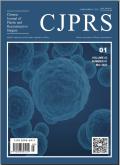Trends and key contributors in peripheral nerve regeneration research: A bibliometric study
Chinese Journal of Plastic and Reconstructive Surgery
Pub Date : 2025-06-01
DOI:10.1016/j.cjprs.2025.05.002
引用次数: 0
Abstract
Background
Peripheral nerve regeneration is a critical research area with significant implications for neurology, neurosurgery, and regenerative medicine. A bibliometric analysis was conducted to provide a structured overview of research trends, intellectual impact, and evolving themes in peripheral nerve regeneration. This study aimed to identify the most influential research articles on peripheral nerve regeneration; analyze keyword trends, thematic evolution, and co-word structures; assess the contributions of top authors, universities, and countries; and examine collaboration networks and research dynamics.
Methods
A systematic bibliometric approach was employed using two search strategies. The first strategy involved searching within the title, abstract, and keyword fields, yielding 15 317 papers, whereas the second strategy was restricted to searching titles only, retrieving 3 531 papers. From these, the 100 most cited papers were selected for analysis. A thematic analysis was conducted using co-word clustering. The leading contributors were ranked according to the number of publications, citations, h-index, g-index, and m-index.
Results
The bibliometric analysis provided several key insights. Keyword analysis using bi- and tri-gram techniques revealed the dominant research themes within the field. The top contributors, including authors, universities, and countries, were ranked based on their productivity and citation impact. Collaboration networks were mapped at the author, institutional, and country levels, highlighting key partnerships and global research interactions. Thematic analysis classified research into seven major domains: neural regeneration and repair; cellular and molecular biology; biomaterials and tissue engineering; experimental studies and statistical analyses; functional and therapeutic aspects; neuropathic pain and peripheral nerve disorders; and Schwann cell and cellular responses. Additionally, the ten most influential papers were reviewed in detail to understand their contributions to the field.
Conclusion
This study provides a comprehensive and structured overview of peripheral nerve regeneration research. These findings offer valuable insights into the intellectual foundation of the field by identifying key contributors, research trends, and collaboration patterns. The results serve as a guide for future research, helping researchers to navigate the evolving landscape of peripheral nerve regeneration.
外周神经再生研究的趋势和主要贡献者:文献计量学研究
周围神经再生是神经病学、神经外科和再生医学的一个重要研究领域。通过文献计量学分析,对周围神经再生的研究趋势、智力影响和发展主题进行了结构化的概述。本研究旨在找出周围神经再生方面最具影响力的研究文章;分析关键词趋势、主题演变和共词结构;评估顶尖作者、大学和国家的贡献;并检查合作网络和研究动态。方法采用系统文献计量学方法,采用两种检索策略。第一种策略包括在标题、摘要和关键字字段中搜索,得到15 317篇论文,而第二种策略仅限于搜索标题,检索到3 531篇论文。从中选取被引次数最多的100篇论文进行分析。利用共词聚类进行主题分析。根据发表数、引用数、h-index、g-index、m-index对主要贡献者进行排名。结果文献计量学分析提供了几个关键的见解。使用双图和三图技术的关键词分析揭示了该领域的主要研究主题。排名靠前的贡献者,包括作者、大学和国家,是根据他们的生产力和引用影响进行排名的。在作者、机构和国家层面绘制了合作网络,突出了关键伙伴关系和全球研究互动。专题分析将研究分为七个主要领域:神经再生与修复;细胞与分子生物学;生物材料与组织工程;实验研究和统计分析;功能和治疗方面;神经性疼痛和周围神经紊乱;以及雪旺细胞和细胞反应。此外,我们还详细回顾了10篇最具影响力的论文,以了解它们对该领域的贡献。结论本研究为周围神经再生的研究提供了一个全面、有组织的综述。这些发现通过识别关键贡献者、研究趋势和协作模式,为该领域的知识基础提供了有价值的见解。这些结果为未来的研究提供了指导,帮助研究人员了解周围神经再生的发展前景。
本文章由计算机程序翻译,如有差异,请以英文原文为准。
求助全文
约1分钟内获得全文
求助全文
来源期刊

Chinese Journal of Plastic and Reconstructive Surgery
Surgery, Otorhinolaryngology and Facial Plastic Surgery, Pathology and Medical Technology, Transplantation
CiteScore
0.40
自引率
0.00%
发文量
115
审稿时长
55 days
 求助内容:
求助内容: 应助结果提醒方式:
应助结果提醒方式:


